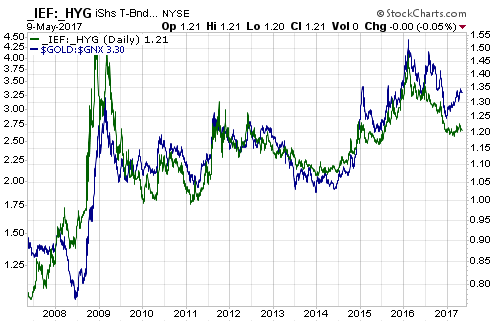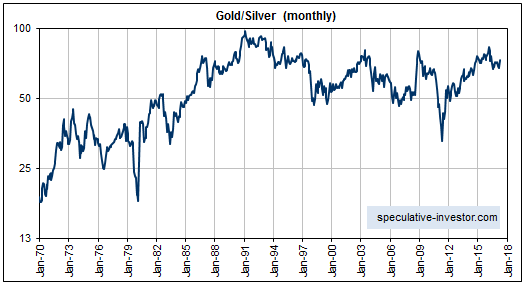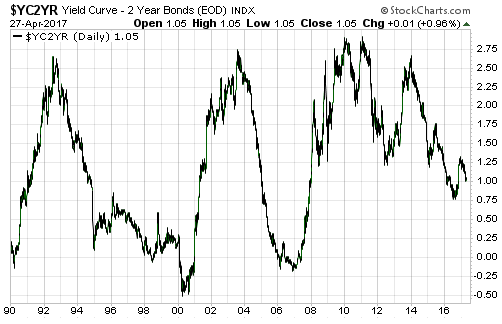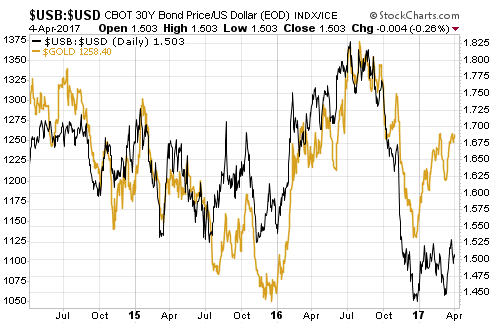A few weeks ago the World Gold Council (WGC) published its “Gold Demand Trends” report for the first quarter of 2017. These reports actually provide no information about gold demand and in my opinion are useless. In fact, they are worse than useless because they are misleading.
It is axiomatic that at any given time the total demand for gold equals the total supply of gold, which, in turn, equals the total aboveground gold inventory. The total aboveground gold inventory is somewhere between 150K and 200K tonnes, so at any given time the total demand for gold lies somewhere between 150K and 200K tonnes.
When new buyers enter the market they draw from the existing aboveground supply. These new buyers cannot possibly increase the total demand, because the increased demand on the part of people who add to their gold ownership will always be exactly offset by the decreased demand on the part of people who reduce their gold ownership.
A balance is maintained by the changing price. For example, if there are more buyers than sellers at a particular price or the buyers are more motivated than the sellers then the price will rise to establish a new balance. Therefore, a price rise is irrefutable evidence of a momentary rise in demand relative to supply and a price decline is irrefutable evidence of a momentary fall in demand relative to supply.
Importantly, the change in price is the ONLY reliable indication of an attempt by demand to rise or fall relative to supply. Any statement to the effect that a price rise was accompanied by reduced demand or that a price decline was accompanied by increased demand is therefore ludicrous.
The effect of the gold-mining industry is to increase the total aboveground gold supply by about 1.5% every year. Actually, as the result of gold mining both the total supply and the total demand increase by about 1.5% every year, since demand and supply must always be equal with price changing to maintain the balance.
Although gold miners are adding new gold to the total supply, the newly-mined gold is no more capable of satisfying current demand than gold that was mined in the distant past. Consequently, gold miners are similar to any other sellers. The one significant difference is that a gold miner will generally take whatever price is on offer, whereas most other owners of gold will have a price in mind at which they will sell (and below which they will not sell). In some cases this price will be a great distance above the current price and in other cases the owner of gold will intend to hold indefinitely regardless of how high the price rises. All of these intentions by the existing holders of gold contribute to the performance of the gold price.
Getting back to the WGC reports, what is being referred to as gold demand is actually just the sum of some easy-to-identify gold flows. In effect, these reports confuse trading volume with demand. Furthermore, they don’t even come close to accounting for all trading volume. What they essentially do is begin with the wrongheaded assumption that the total supply of gold equals the amount of annual mine production plus recycled gold plus producer hedging, or an amount of around 4,000 tonnes. They therefore begin with the assumption that the total supply of gold is about 1/50th of its actual amount. They then come up with a bunch of so-called (but not actual) demand figures, including the amount of gold moving into bullion ETFs and the amount of gold sold in jewellery form, that add up to about 4,000 tonnes.
As an aside, there will usually be a positive correlation between the gold price and the amount of gold moving into gold ETFs, but that’s only because the ETF inventory often FOLLOWS the price. I’ve discussed this in previous blog posts.
Summing up, the gold supply/demand reports put out by the WGC are based on numerous logical errors and misconceptions, such as ignoring the dominant role played by the aboveground gold stock, treating transfers from some sellers to some buyers as indicative of changing overall demand, and assuming that shifts in demand can be determined independently of price. Due to these deficiencies they are worse than useless.
 Print This Post
Print This Post




